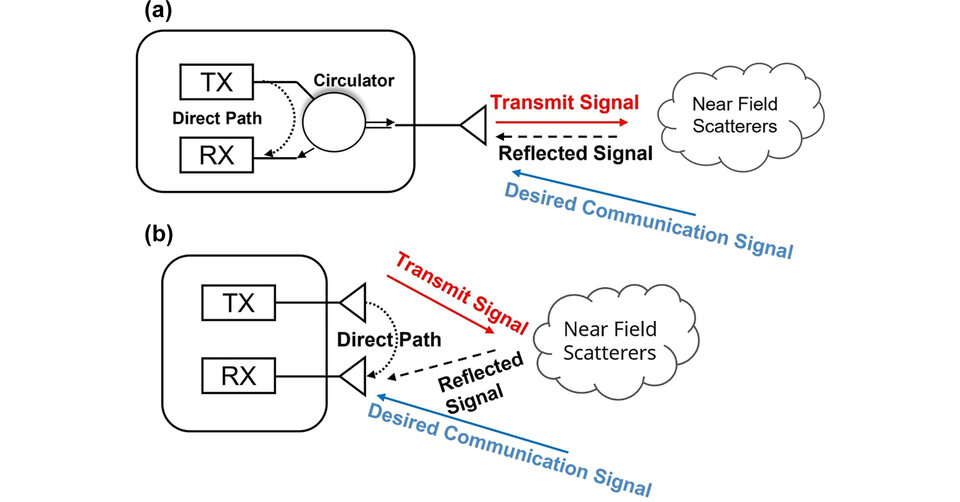The challenge of self-interference in the antenna domain

Our researcher Merve Tascioglu Yalcinkaya from the research group RF Design Enablement just published her study “Comparative analysis of antenna isolation characteristic with & without self-interference reduction techniques towards in-band full-duplex operation”.
In recent years, there have been big improvements in communication and radar systems. One of these new technologies is called in-band full-duplex (IBFD). IBFD enables communication or radar systems to operate at the same time, leading to improvements in spectral efficiency and data rate. It also has the potential to enable Joint Communication and Sensing (JC&S) technology, which allows radar sensing and communication to work simultaneously.
However, IBFD and JC&S systems face a significant challenge with self-interference (SI), which happens when the signals mix up and disrupt the antenna's performance. To address this challenge, this study has reviewed different techniques that antenna designers can use to reduce SI in the antenna domain. It compares the advantages and disadvantages of each technique and provides a comparative analysis of different methods before and after SI reduction.
This research is important because it helps antenna designers choose the best technique for their specific application. It also helps IBFD and JC&S systems work better in real-world applications. By reducing SI, the systems can function more efficiently, which can lead to better performance and outcomes.
Follow the Link to read the Comparative analysis of antenna isolation.
